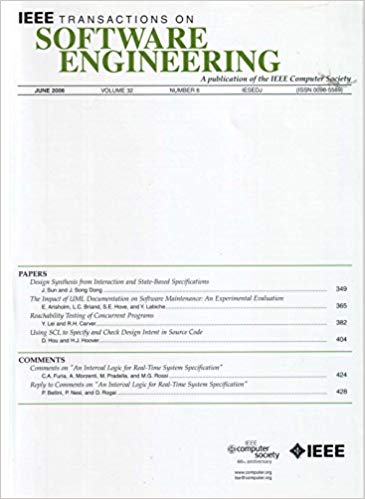Robotic Visual GUI Testing for Truly Non-Intrusive Test Automation of Touch Screen Applications
IF 6.5
1区 计算机科学
Q1 COMPUTER SCIENCE, SOFTWARE ENGINEERING
引用次数: 0
Abstract
Test automation intrusive to the devices under test is difficult to apply on closed or uncommon touch screen systems, e.g., a Switch game console or a digital instrument running a self-defined operating system. There is a lack of non-intrusive test automation techniques for situations where intrusive testing is impossible or not easy to apply. This paper presents RoScript, a novel robotic visual GUI testing system for truly non-intrusive test automation of touch screen applications. RoScript expresses GUI actions in visual test scripts and executes them via a physical robot. A key innovation of RoScript is a test engine armed with environment calibration techniques to achieve automated test execution without manually setting any environment parameter or adjusting the robot arms for a new subject under test. Additionally, two complementary computer vision-based methods are also introduced to record test scripts from videos of human actions on a touch screen. The RoScript test automation does not rely on the internal system of a device under test, making it truly non-intrusive and suitable for touch screen applications running on almost any platform. We evaluated RoScript on a diverse range of devices--including three Android/iOS phones, a Windows tablet, a Linux-based Raspberry Pi, a GoPro camera, and a Switch game console--across over 1100 GUI actions in 160 test scenarios. The results demonstrate RoScript’s high accuracy in test execution: 94% for executing test scripts and 97% for replicating GUI actions. Furthermore, RoScript accurately recorded about 85% of human touch screen actions into test code. These results highlight RoScript’s potential as a truly non-intrusive, cross-platform solution for GUI test automation.求助全文
约1分钟内获得全文
求助全文
来源期刊

IEEE Transactions on Software Engineering
工程技术-工程:电子与电气
CiteScore
9.70
自引率
10.80%
发文量
724
审稿时长
6 months
期刊介绍:
IEEE Transactions on Software Engineering seeks contributions comprising well-defined theoretical results and empirical studies with potential impacts on software construction, analysis, or management. The scope of this Transactions extends from fundamental mechanisms to the development of principles and their application in specific environments. Specific topic areas include:
a) Development and maintenance methods and models: Techniques and principles for specifying, designing, and implementing software systems, encompassing notations and process models.
b) Assessment methods: Software tests, validation, reliability models, test and diagnosis procedures, software redundancy, design for error control, and measurements and evaluation of process and product aspects.
c) Software project management: Productivity factors, cost models, schedule and organizational issues, and standards.
d) Tools and environments: Specific tools, integrated tool environments, associated architectures, databases, and parallel and distributed processing issues.
e) System issues: Hardware-software trade-offs.
f) State-of-the-art surveys: Syntheses and comprehensive reviews of the historical development within specific areas of interest.
 求助内容:
求助内容: 应助结果提醒方式:
应助结果提醒方式:


